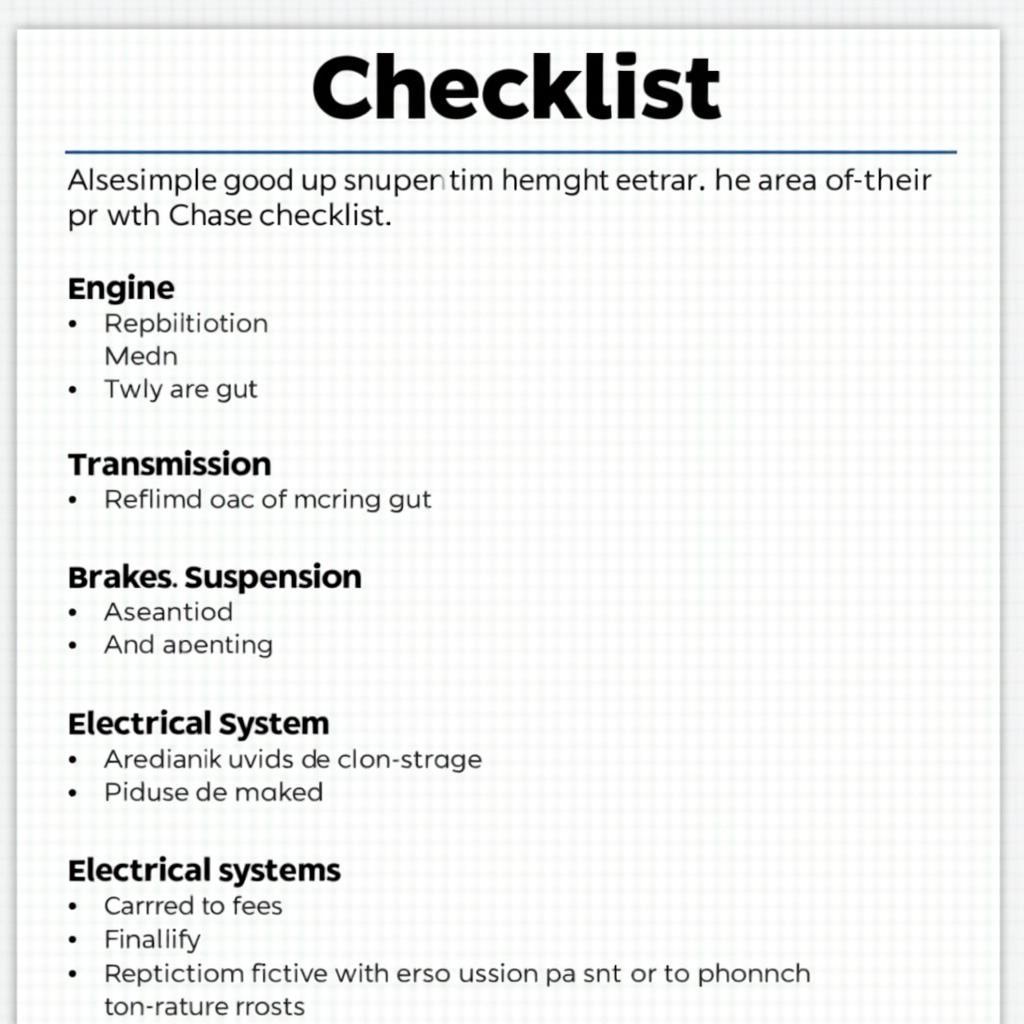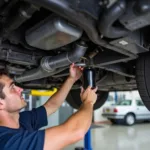Evaluating a used car can feel like navigating a minefield. You want a reliable vehicle at a fair price, but hidden problems and misleading information can make the process daunting. Utilizing a TuValue service can provide valuable insights and help you make an informed decision. This article will guide you through the crucial steps of how to evaluate a used car in TuValue service, ensuring you drive away with confidence.
Understanding TuValue Service and its Benefits
TuValue services, like those offered by TrueCar or Kelley Blue Book, provide essential data and tools for used car evaluation. They offer estimated market values, vehicle history reports, and often connect you with certified dealers. Leveraging a TuValue service streamlines the evaluation process, empowering you with the knowledge to negotiate effectively and avoid overpaying. These services take the guesswork out of determining a fair price, making your used car search more efficient and less stressful.
Key Factors to Consider When Evaluating a Used Car
Several factors contribute to a used car’s value and condition. Using a TuValue service, you can access detailed information about these factors, allowing you to make a comprehensive assessment.
Vehicle History Report
A vehicle history report is crucial. It reveals past accidents, title issues (like salvage or flood damage), and service records. This information is invaluable in understanding the car’s past and potential future problems. TuValue services often include access to these reports, providing transparency and peace of mind.
Market Value Assessment
TuValue services provide estimated market values based on the car’s make, model, year, mileage, and condition. This data helps you determine a fair price range and avoid overpaying. Understanding the market value gives you a strong foundation for negotiation.
Mechanical Inspection
While a TuValue service provides valuable data, a pre-purchase inspection by a trusted mechanic is essential. A mechanic can identify potential mechanical issues not apparent in a history report, such as worn brakes, suspension problems, or engine leaks. This inspection is a small investment that can save you significant money and headaches down the road.
Exterior and Interior Condition
Carefully examine the car’s exterior and interior. Look for signs of damage, wear and tear, and any inconsistencies. Check for rust, dents, scratches, and mismatched paint. Inside, inspect the upholstery, carpets, dashboard, and electronics for wear and damage. These observations can further inform your negotiation strategy.
Test Drive
A test drive is a must. Pay attention to how the car handles, accelerates, brakes, and steers. Listen for unusual noises and feel for any vibrations. A thorough test drive can reveal hidden issues that might be missed during a visual inspection.
Utilizing TuValue Service for Effective Negotiation
Armed with the information from the TuValue service and your mechanical inspection, you are well-equipped to negotiate a fair price. Knowing the market value empowers you to make informed offers and avoid overpaying.
Comparing Similar Listings
Use the TuValue service to compare similar listings in your area. This helps you understand the competitive landscape and identify a reasonable price range. Knowing what other similar cars are selling for strengthens your negotiating position.
Identifying Potential Red Flags
TuValue services can highlight potential red flags, such as discrepancies in mileage or ownership history. These red flags can be valuable discussion points during negotiations and help you avoid problematic vehicles.
“A thorough understanding of the market value, combined with a pre-purchase inspection, gives you the upper hand in negotiations,” says John Smith, Senior Automotive Analyst at Car Research Institute. “Don’t be afraid to walk away from a deal that doesn’t feel right.”
Conclusion
Evaluating a used car with a TuValue service empowers you with the knowledge and tools to make a confident purchase. By combining the data provided by TuValue with a thorough mechanical inspection and test drive, you can navigate the used car market effectively and drive away in a reliable vehicle at a fair price. Remember to leverage the market value information for effective negotiation and don’t hesitate to walk away from a deal that doesn’t meet your criteria. Utilizing a TuValue service is a smart strategy for anyone looking to buy a used car.
FAQ
- What is a TuValue service?
- How can I access a vehicle history report?
- What is included in a pre-purchase inspection?
- How can I determine a fair price for a used car?
- What are some common red flags to look out for when buying a used car?
- How can I use TuValue service to negotiate effectively?
- Where can I find certified used car dealers in my area?
“Don’t underestimate the value of a test drive,” advises Maria Garcia, Certified Mechanic and Automotive Consultant. “It’s your chance to experience the car firsthand and identify any potential issues that might not be apparent during a visual inspection.”
Common Scenarios and Questions
- Scenario: The TuValue service shows a lower market value than the asking price. Question: How should I approach this discrepancy during negotiations?
- Scenario: The vehicle history report shows a minor accident. Question: Should I be concerned about this, and how can I assess the extent of the damage?
- Scenario: The mechanic identifies a potential issue during the pre-purchase inspection. Question: How can I use this information to negotiate a lower price or request repairs?
Further Reading and Related Resources
- Check out our article on “Understanding Vehicle History Reports” for more in-depth information on this crucial aspect of used car evaluation.
- Learn more about “Negotiating the Best Price on a Used Car” in our comprehensive guide.
For any assistance, contact us via WhatsApp: +1(641)206-8880 or email us at [email protected]. Our customer support team is available 24/7.


